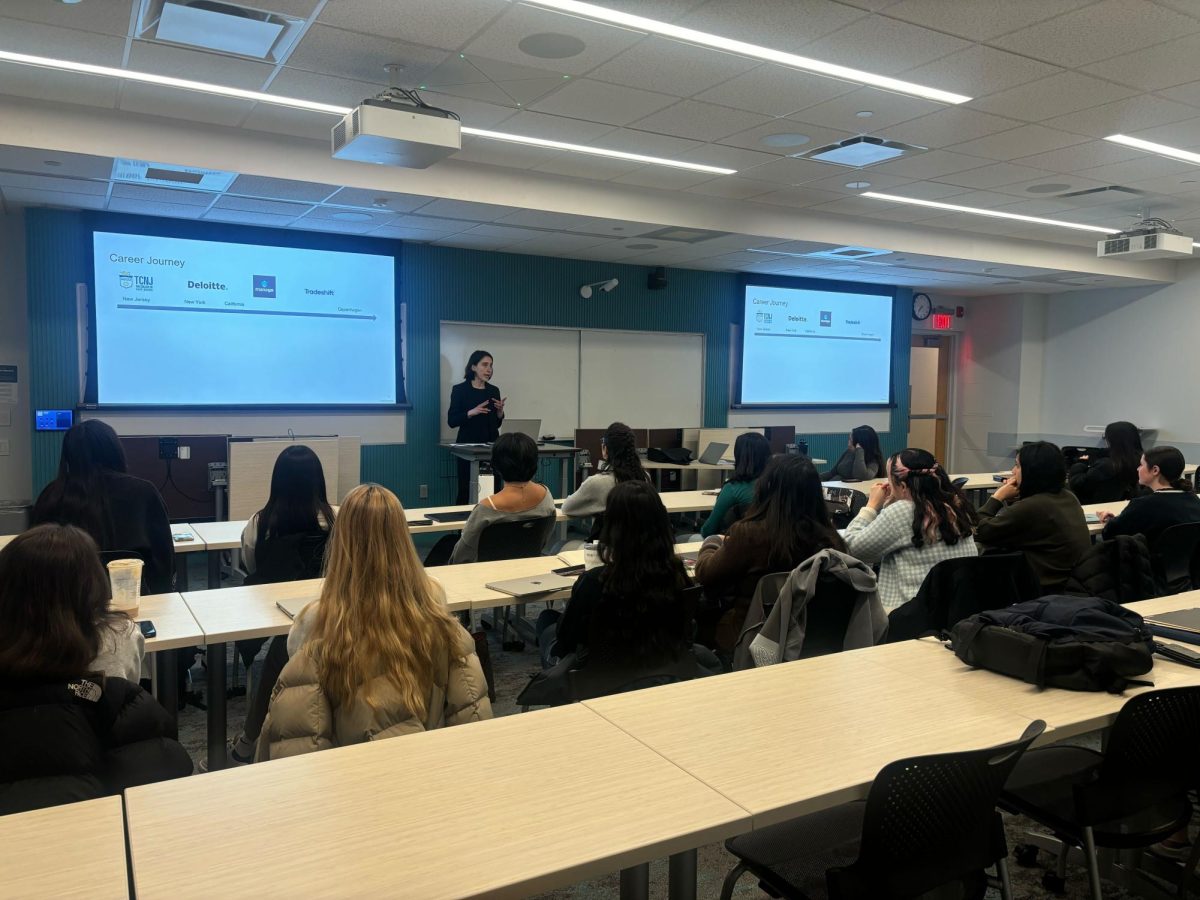By Bradley Thiessen
Twenty-thousand Northeastern alumni have disappeared, but university officials haven’t called the police; they’ve recruited Jack Moynihan.
As vice president for alumni relations at Northeastern, Moynihan has been enlisted to try to track down the tens of thousands of graduates living off the university’s grid. These are graduates for whom the university has no contact information, graduates who left Northeastern when their time was up and never looked back.
And Moynihan has the daunting task of wooing, uniting and soliciting the rest of Northeastern’s vast alumni population, too, he said. There are 190,000 alumni still living, he said – 190,000 people who could be contributing to the university community.
If the outreach alone weren’t hard enough, two of Northeastern’s biggest drawing points are his biggest hurdles: its history as a commuter school and its co-op program, which has long prevented students from bonding – with each other, and the idea of Northeastern.
“While it has changed in the last 10 to 15 years, we used to be largely a commuter school,” Moynihan said. “You get in your car, go to class, get back in your car and go home. You don’t have a feeling of involvement in the university.”
Now it’s Moynihan’s job to battle widespread apathy as well as the unique disconnect among graduates that lowers the odds they’ll donate the money that helps run Northeastern.
“Tuition only covers 50 to 60 percent of education [costs],” said Michael Quinn, director of the Northeastern Fund, which is supported by alumni donations. “Money has to come from elsewhere to get things like athletic programs.”
Every year, donations from alumni account for between $4 to $5 million of the fund, Quinn said.
And according to last year’s “America’s Best Colleges” issue of U.S. News and World Report, 10 percent of Northeastern’s graduates give back to the school. Quinn said the number is a rough estimate; it factors in donations made by graduates, whether it be $1 or $1 million.
Compared to other universities in the city, the number of alums who donate funds to Northeastern is about average: seven percent of Boston University graduates give back, as do 14 percent of graduates from Boston College.
There are more pronounced benefits to being an active alum at Northeastern than getting to contribute financially to the university, said Peter Oakes, director of finance and operations at Northeastern.
“There are opportunities to get discounts on different types of insurance through Liberty Mutual, an online directory to contact other alumni [and] career services for job posting, among others,” he said.
Success in staking out graduates is all in the approach, Moynihan said.
“There are two ways to look at it,” said Moynihan, who has done similar work at Tufts and, most recently, BC. “You can lead with your hand out looking for a buck or you can lead with the heart.”
Moynihan leads with his heart, he said, scheduling events and setting up activities that reunite graduates who may not have seen each other for years or decades.
He’s also kickstarted an outreach initiative, through mail, phone and e-mail, he said.
Each year, he said, Northeastern mails letters to the 170,000 graduate addresses they have, advertising upcoming events on campus and gauging their interest in donating funds. The school also holds a phone-a-thon every night that functions like the alumni mail, with 40 to 50 students calling any of the 150,000 available graduate phone numbers.
The university also has a database of 60,000 graduate e-mail addresses, Moynihan said.
Four times a year, Moynihan’s association produces a magazine targeted at alumni – Northeastern University Alumni Magazine – and distributes it to more than 166,000 alumni and 2,800 faculty and staff, said Susan Piland, the magazine’s executive editor.
The alumni website also has a quarterly video magazine called Husky Nation, which contains updates on alumni news and events.
One of the more wide-reaching initiatives Moynihan has spearheaded is the regional chapter program, to organize graduates nationwide.
“[The program] is set up in areas where there are a high population of alumni,” Moynihan said.
Last semester, alumni gathered in Miami to watch the Boston Bruins, who were in town to play the Florida Panthers.
Bringing people together at these events will hopefully rekindle alumni’s affiliations with Northeastern, Moynihan said, and perhaps lead them to give back to its community.
Among the luxuries Moynihan lacks in contacting alumni is a reliable record for most public universities: a list of alumni association members. This record might be able to help keep track of people who continue to participate actively in a university’s community after they’ve graduated.
But at Northeastern, he said, this is an ineffective barometer for alumni involvement because graduates never have to offer their consent – or personally register – to be included in the association.
Since Northeastern is a private university, the moment a student walks across the stage at commencement, he’s inducted into the alumni association, free of charge. In contrast, public universities require graduates to register and pay a fee to join their alumni groups.
Moynihan’s initiative has extended to the Internet, too – an effort coordinated by Oakes, the director of finance and operations. About 17,000 alumni have registered for the new online community.
While the university has tabs on about 190,000 alumni, there are still tens of thousands missing, and Moynihan is taking preventative measures to keep current seniors from disappearing after graduation.
Seniors are granted early access to the online alumni community, he said, which gives them the chance to forge connections with recent graduates in the working world.
It also puts these students on file for the alumni association and once they’re on file, they won’t go under the radar. Even after their five years are up, Moynihan said, it’s a way to keep in contact so nobody goes missing anymore.








